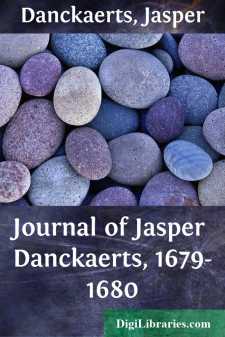Categories
- Antiques & Collectibles 13
- Architecture 36
- Art 48
- Bibles 22
- Biography & Autobiography 813
- Body, Mind & Spirit 142
- Business & Economics 28
- Children's Books 15
- Children's Fiction 12
- Computers 4
- Cooking 94
- Crafts & Hobbies 4
- Drama 346
- Education 46
- Family & Relationships 57
- Fiction 11829
- Games 19
- Gardening 17
- Health & Fitness 34
- History 1377
- House & Home 1
- Humor 147
- Juvenile Fiction 1873
- Juvenile Nonfiction 202
- Language Arts & Disciplines 88
- Law 16
- Literary Collections 686
- Literary Criticism 179
- Mathematics 13
- Medical 41
- Music 40
- Nature 179
- Non-Classifiable 1768
- Performing Arts 7
- Periodicals 1453
- Philosophy 64
- Photography 2
- Poetry 896
- Political Science 203
- Psychology 42
- Reference 154
- Religion 513
- Science 126
- Self-Help 84
- Social Science 81
- Sports & Recreation 34
- Study Aids 3
- Technology & Engineering 59
- Transportation 23
- Travel 463
- True Crime 29
Journal of Jasper Danckaerts, 1679-1680
Categories:
Description:
Excerpt
INTRODUCTION
In the year 1864 Mr. Henry C. Murphy, then corresponding secretary of the Long Island Historical Society, had the good fortune to find in an old book-store in Amsterdam a manuscript whose bearings upon the history of the middle group of American colonies made it, when translated and made accessible as a publication in the Memoirs of the Long Island Historical Society, an historical document of much interest and value. The Journal of two members of the Labadist sect who came over to this country in order to find a location for the establishment of a community has served to throw a flood of light upon what otherwise might have been a lost chapter in the history of Maryland. For so meagre are the sources of ready availability for a knowledge of the Labadist colony which was effected in Maryland that without this account the story of the first communal sect in America might have failed of adequate recording.
But while the Journal of Jasper Danckaerts and Peter Sluyter, the two envoys—or of Jasper Danckaerts, who did the actual writing—is of especial interest in relation to an incident in the early settlement of Maryland, the gauge of its value may be applied as well in other directions. This extended narrative, often discursive and circumstantial, contains much that is suggestive upon the beginnings of the middle group of states, and, indeed, the narrative bears upon facts of importance in connection with Massachusetts as well.
The original manuscript of the Labadist narrators is now in the possession of the Long Island Historical Society. It was bought by the Society at the Murphy sale in 1884. It is written in a fine, good hand on paper of about 8½ by 6½ inches. The pages are numbered with three successive numberings: (A) 1-72, (B) 1-16, 25-192, 217-231, (C) 1-47, the first section corresponding to the voyage to America; the second, to the travels in the middle colonies; the third, to the experiences of the journalist and his companion in New England and on the voyage home. In the second division there is no gap between pages 16 and 25, but after page 192 there is a considerable hiatus. In narrative, this extends over a few days only, June 13-19, but the omitted portion probably also contained a description of the city of New York and the beginning of an account of the Indians. The remaining pages of this section, pages 216-231, proceed with this account, treating of the weapons of the Indians, their treaties with the whites, their intelligence, their burial customs, their virtues and vices, their knowledge of God and their worship, and finally of the beaver and his habits. As the journalist could have had no original contributions to make with regard to the American aborigines, his observations upon this subject have no especial value, and have been omitted.
The manuscript when found was accompanied with six sheets of pen-and-ink drawings. The text appears to be a carefully transcribed copy, plainly written in a different handwriting from that of the drawings. The latter, as the marks upon them show, are the original sketches made upon the spot. All are reproduced in Mr. Murphy's edition of the journal. The first shows the figure of an Indian woman and four fishes, two of them rare and two common. The second drawing shows the entrance to New York Bay at Sandy Hook as seen from the house of Jacques Cortelyou at Nayack (Fort Hamilton)....


